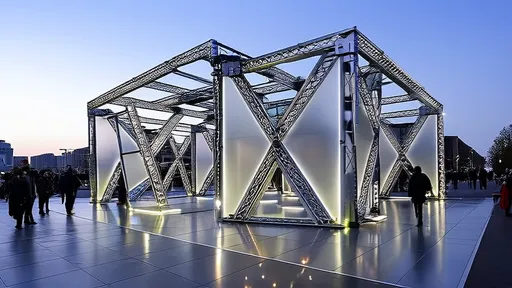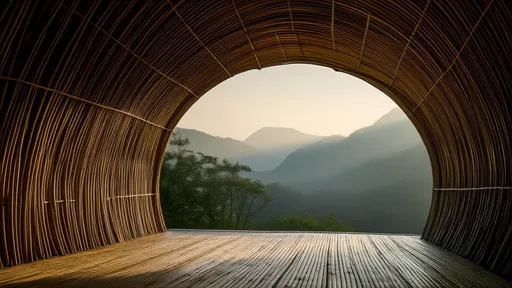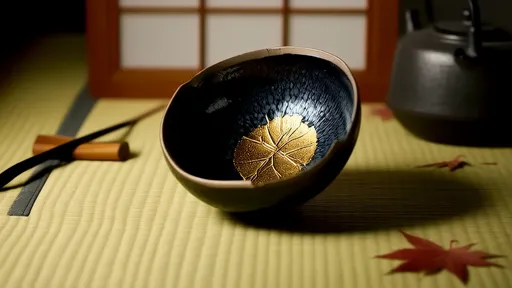In an era where sustainability and ecological responsibility dominate architectural discourse, bamboo has emerged as a material of profound significance. Long relegated to the margins of construction as a "poor man’s timber," this fast-growing grass is now being reimagined as a cornerstone of modern, eco-conscious design. Architects and engineers are rediscovering its remarkable tensile strength, flexibility, and carbon-negative footprint, propelling bamboo into the spotlight as a viable alternative to steel and concrete. The revival of bamboo architecture isn’t merely a nostalgic nod to traditional building techniques—it’s a bold reclamation of a material whose mechanical beauty aligns perfectly with the demands of 21st-century sustainability.
The Historical Roots and Modern Reinterpretation
Bamboo’s architectural legacy spans millennia, with roots in Asia, Latin America, and Africa, where it has been used for everything from humble dwellings to intricate bridges. Yet, its transition into contemporary architecture required overcoming deep-seated biases. For decades, industrialized materials like steel and reinforced concrete were synonymous with progress, while bamboo was dismissed as primitive or temporary. Today, visionary designers are challenging these perceptions by marrying traditional craftsmanship with cutting-edge engineering. Structures like the Green School in Bali and the Bamboo Pavilion at the Milan Expo demonstrate how bamboo can achieve soaring, curvilinear forms that defy conventional expectations of what the material can do.
What sets bamboo apart is its extraordinary strength-to-weight ratio—surpassing that of many metals—and its ability to regenerate within three to five years, unlike timber which may take decades. Modern treatment techniques, such as boron-based preservation and heat-treated laminates, have also addressed historical concerns about durability and pest resistance. These advancements have allowed architects to explore bamboo’s potential not just as an aesthetic accent but as a primary structural element capable of supporting multi-story buildings and dynamic, load-bearing geometries.
The Science Behind the Aesthetics
Bamboo’s mechanical properties read like a manifesto for sustainable design. Its hollow, tubular structure provides inherent resistance to bending and compression, while the silica-rich fibers running along its length grant it exceptional tensile strength. When harvested at the right maturity (typically between 3–5 years), bamboo exhibits a Young’s modulus comparable to oak, yet it weighs a fraction of the latter. This combination allows for structures that are both lightweight and resilient—a critical advantage in earthquake-prone regions where flexibility is paramount.
Researchers are now quantifying what indigenous builders have long understood empirically. Studies at institutions like the MIT Media Lab and the University of Freiburg have documented bamboo’s ability to absorb and redistribute kinetic energy, making it ideal for disaster-resistant construction. Meanwhile, parametric design tools enable architects to model bamboo’s behavior under stress, optimizing geometries that maximize its natural load-bearing capacities. The result is a new language of form—one where hyperbolic paraboloids and undulating gridshells celebrate rather than conceal the material’s organic irregularity.
Cultural Resonance and Ecological Imperative
Beyond its technical merits, bamboo architecture carries deep cultural symbolism. In many societies, bamboo represents resilience, adaptability, and harmony with nature—qualities increasingly sought in a world grappling with climate change. Projects like Vo Trong Nghia’s "Bamboo Stalactites" in Vietnam or Simón Vélez’s cathedral-like pavilions in Colombia don’t just showcase the material’s versatility; they reassert local identity in the face of globalized, carbon-intensive construction norms.
Environmentally, bamboo’s credentials are unparalleled. It sequesters carbon at a rate 30% higher than hardwood forests, and its rhizome root system prevents soil erosion. Unlike concrete—responsible for 8% of global CO₂ emissions—bamboo requires minimal processing energy. When treated without toxic chemicals, it remains biodegradable at the end of its lifecycle, closing the loop on circular design. These attributes have spurred certifications like the ISO 22156 standard for bamboo structural design, lending credibility to its use in mainstream architecture.
Challenges and the Path Forward
Despite its promise, bamboo architecture faces hurdles. Building codes in many countries still lack provisions for bamboo construction, forcing innovators to navigate bureaucratic hurdles. There’s also the question of scalability; while bamboo thrives in tropical climates, its global supply chain remains fragmented. Architects must contend with variations in quality and diameter between culms, requiring adaptable design approaches that embrace imperfection.
Yet, these challenges are fueling creativity rather than stifling it. Cross-laminated bamboo panels (CLBP) are emerging as standardized alternatives to plywood, and digital fabrication allows for precision joinery that eliminates the need for metal fasteners. Educational initiatives, such as the Bamboo U workshop in Bali, are training a new generation of builders in hybrid techniques that blend ancestral knowledge with contemporary tools.
The revival of bamboo architecture is more than a trend—it’s a paradigm shift. By harnessing the material’s innate mechanical intelligence, designers are proving that sustainability need not come at the expense of innovation or beauty. In bamboo’s hollow stems, we find a blueprint for a future where buildings breathe with the environment rather than dominate it. As this renaissance gains momentum, one truth becomes clear: the most radical architecture of our time may not be made of space-age alloys, but of grass—carefully cultivated, ingeniously engineered, and profoundly connected to the earth.

By /Jul 9, 2025

By /Jul 9, 2025

By /Jul 9, 2025

By /Jul 9, 2025

By /Jul 9, 2025

By /Jul 9, 2025

By /Jul 9, 2025

By /Jul 9, 2025

By /Jul 9, 2025

By /Jul 9, 2025

By /Jul 9, 2025

By /Jul 9, 2025

By /Jul 9, 2025

By /Jul 9, 2025

By /Jul 9, 2025

By /Jul 9, 2025

By /Jul 9, 2025

By /Jul 9, 2025